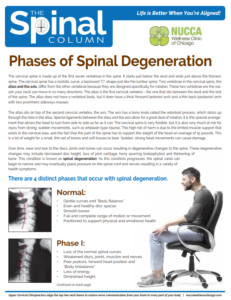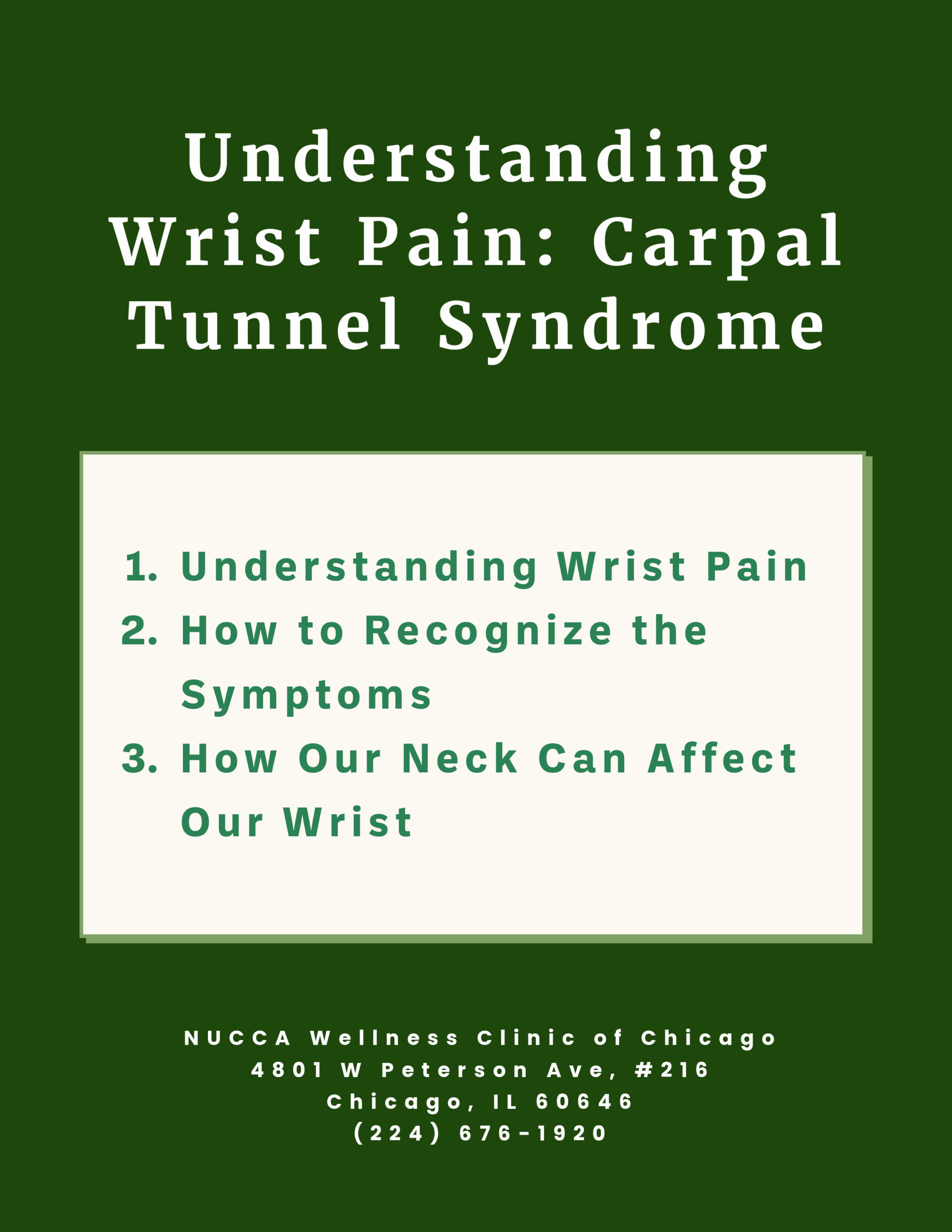 Phases of Spinal Degeneration
Phases of Spinal Degeneration
The cervical spine is made up of the first seven vertebrae in the spine. It starts just below the skull and ends just above the thoracic spine. The cervical spine has a lordotic curve, a backward “C”-shape just like the lumbar spine. Two vertebrae in the cervical spine, the atlas and the axis, differ from the other vertebrae because they are designed specifically for rotation. These two vertebrae are the reason your neck can move in so many directions. The atlas is the first cervical vertebra – the one that sits between the skull and the rest of the spine. The atlas does not have a vertebral body, but it does have a thick forward (anterior) arch and a thin back (posterior) arch with two prominent sideways masses.
The atlas sits on top of the second cervical vertebra, the axis. The axis has a bony knob called the odontoid process, which
sticks up through the hole in the atlas. Special ligaments between the atlas and the axis allow for a great deal of rotation. It is this special arrangement that allows the head to turn from side to side as far as it can. The cervical spine is very flexible, but it is also very much at risk for injury from strong, sudden movements, such as whiplash-type injuries. This high risk of harm is due to the limited muscle support that exists in the cervical area, and the fact that this part of the spine has to support the weight of the head-an average of 15 pounds. This is a lot of weight for a small, thin set of bones and soft tissues to bear. Sudden, strong head movements can cause damage.
How does degenerative changes made on spine impact on health?
Over time, wear and tear to the discs, joints and bones can occur resulting in degenerative changes to the spine. These degenerative changes may include decreased disc height, loss of joint cartilage, bony spurring (osteophytes) and thickening of bone. This condition is known as spinal degeneration. As this condition progresses, the spinal canal can begin to narrow and may eventually place pressure on the spinal cord and nerves resulting in a variety of health symptoms.
Can it be prevented?
Once your spine develops degenerative changes, it can’t be reversed. For instance, bone spurring (osteophytes) takes time to develop for long period of time. When those changes progress enough to narrow the spinal canal and start to stress on your nerves, that is when you start to feel pain and sense something is wrong. The pain alerts your body to ask for your attention. Now, you have to try your best to prevent further narrowing by managing your spinal structure properly. You have to focus on correcting your spinal structure back to proper position, so your weight distribution to your spinal discs are evenly balanced.


What can you do?
When the injury to your body starts to harm your own spine, your upper neck is vulnerable to misalign. Upper neck is directly involved with balance and autonomic nervous system, and it changes your postural balance and muscle tones in your back. Stress on your neck needs to be relieved and its critical even as accommodating with other types of treatments. That is why you experience relief from all different types of neurological dysfunction when you free the stress on your upper neck region.
Upper Cervical chiropractors at NUCCA Wellness Clinic of Chicago with a location in Chicago and Wheeling are specialist trained by the National Upper Cervical Chiropractic Association (NUCCA). We are serving Northbrook, Long Grove, Lincolnshire, Buffalo Grove, Vernon Hills, Libertyville, Highland Park, Palatine, Glenview, Skokie, Deerfield, and so on.
We are uniquely trained to correct problems in the upper cervical spine (neck). This vital area is intimately connected to the central nervous system and problems in this area have been shown to be an underlying cause of a variety of different health problems, including migraines, vertigo, whiplash injuries, post-concussive syndrome, facial and jaw pain, etc. This type of care has also shown benefits for athletic performance and pregnancy outcomes.
You can download our newsletter click here




